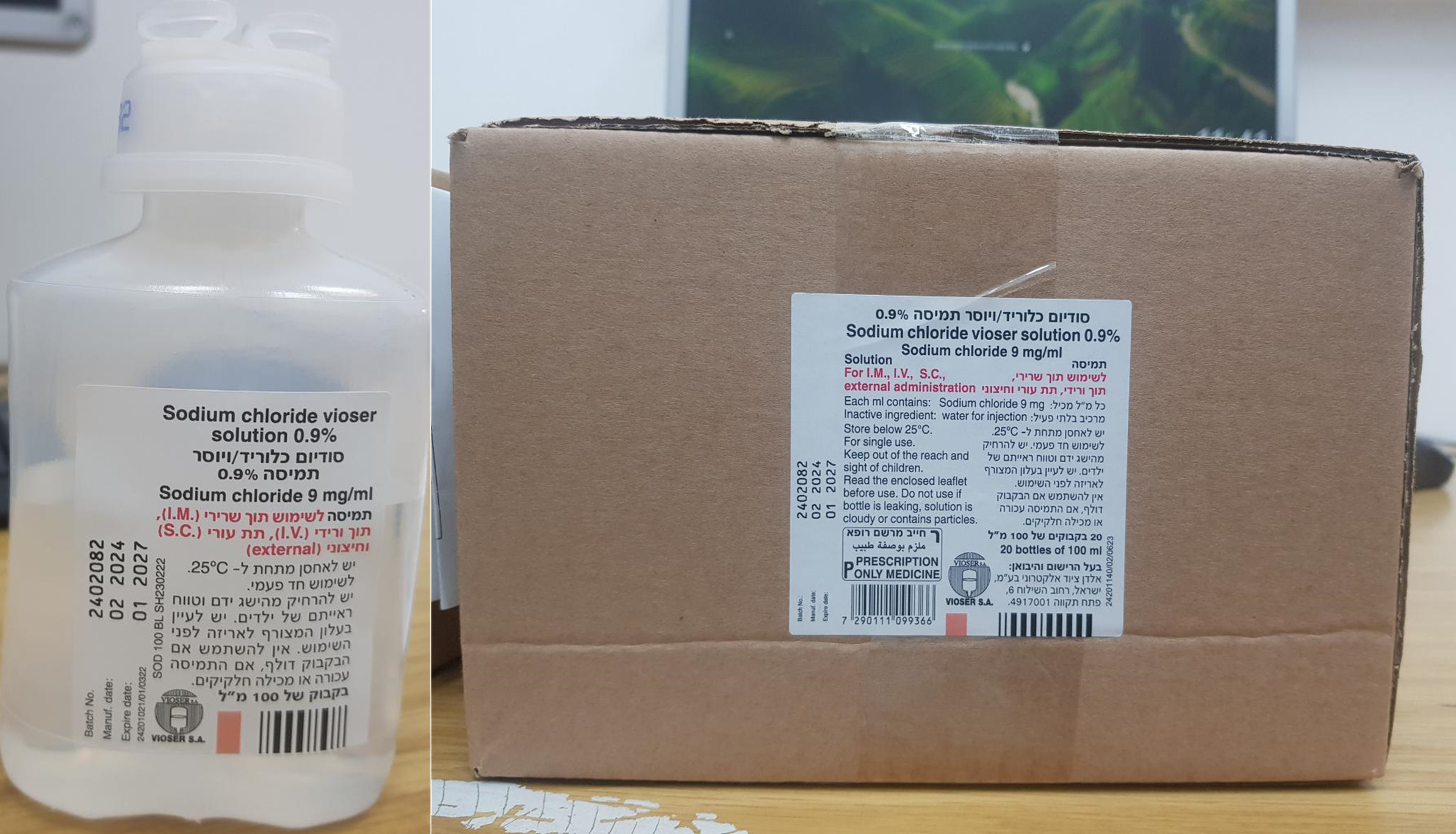Quest for the right Drug

סודיום כלוריד/ויוסר תמיסה% 0.9 SODIUM CHLORIDE VIOSER SOLUTION 0.9 % (SODIUM CHLORIDE)
תרופה במרשם
תרופה בסל
נרקוטיקה
ציטוטוקסיקה
צורת מתן:
תוך-ורידי, תוך-שרירי, תת-עורי, חיצוני : I.V, I.M, S.C, EXTERNAL
צורת מינון:
תמיסה : SOLUTION
עלון לרופא
מינוניםPosology התוויות
Indications תופעות לוואי
Adverse reactions התוויות נגד
Contraindications אינטראקציות
Interactions מינון יתר
Overdose הריון/הנקה
Pregnancy & Lactation אוכלוסיות מיוחדות
Special populations תכונות פרמקולוגיות
Pharmacological properties מידע רוקחי
Pharmaceutical particulars אזהרת שימוש
Special Warning עלון לרופא
Physicians Leaflet
Pharmacological properties : תכונות פרמקולוגיות
Pharmacodynamic Properties
5.1 Pharmacodynamic properties Pharmacotherapeutic group: solutions affecting electrolyte balance, electrolytes, ATC code: B05B B01 Mechanism of action Sodium is the primary cation in the extracellular space and, together with various anions, regulates the size of the latter. Sodium is one of the major mediators of bioelectric processes within the body. Chloride is the main osmotically active anion in the extracellular space. A rise in the serum chloride concentration leads to increased renal bicarbonate excretion. An acidifying effect is therefore induced through the administration of chloride. Pharmacodynamic properties The sodium content and fluid metabolism in the body are closely connected. Each deviation in plasma sodium from the physiological concentration simultaneously affects the body's fluid status. Independently of serum osmolality, a rise in the sodium content within the body also means a drop in free body water. An 0.9 % solution of sodium chloride has the same osmolarity as plasma. Administration of this solution leads primarily to filling of the interstitial space, which represents roughly 2/3 of the whole extracellular space. Only 1/3 of the volume administered remains in the intravasal space. The haemodynamic effect of the solution is therefore only short-lasting.
Pharmacokinetic Properties
5.2 Pharmacokinetic properties Absorption As the solution is administered as an intravenous infusion, the bioavailability of the solution is 100 %. Distribution The body's total sodium content is approximately 80 mmol/kg (5600 mmol), of which 300 mmol can be found in intracellular fluid in a concentration of 2 mmol/L and 2500 mmol of which are bound in bones. Approximately 2 mol can be found in extracellular fluid in a concentration of 135-145 mmol/L (3.1-3.3 g/L). The total chloride content in the body is approximately 33 mmol/kg bodyweight. Serum chloride ranges from 98 to 108 mmol/L. Biotransformation Although sodium and chloride are absorbed, distributed and excreted, they are not metabolised in the strict sense. The kidneys are the main regulators of sodium and fluid balance. Together with hormonal control mechanisms (renin-angiotensin-aldosterone system, antidiuretic hormone) and with the hypothetical natriuretic hormone, they are chiefly responsible for keeping the volume of the extracellular space constant and for its fluid composition. Chloride is exchanged for hydrogen carbonate in the tubule system and, in this way, is involved in the regulation of the acid-base balance. Elimination Sodium and chloride are excreted via sweat, urine and the gastrointestinal tract.

שימוש לפי פנקס קופ''ח כללית 1994
לא צוין
תאריך הכללה מקורי בסל
לא צוין
הגבלות
לא צוין
רישום
167 70 35947 00
מחיר
0 ₪
מידע נוסף
